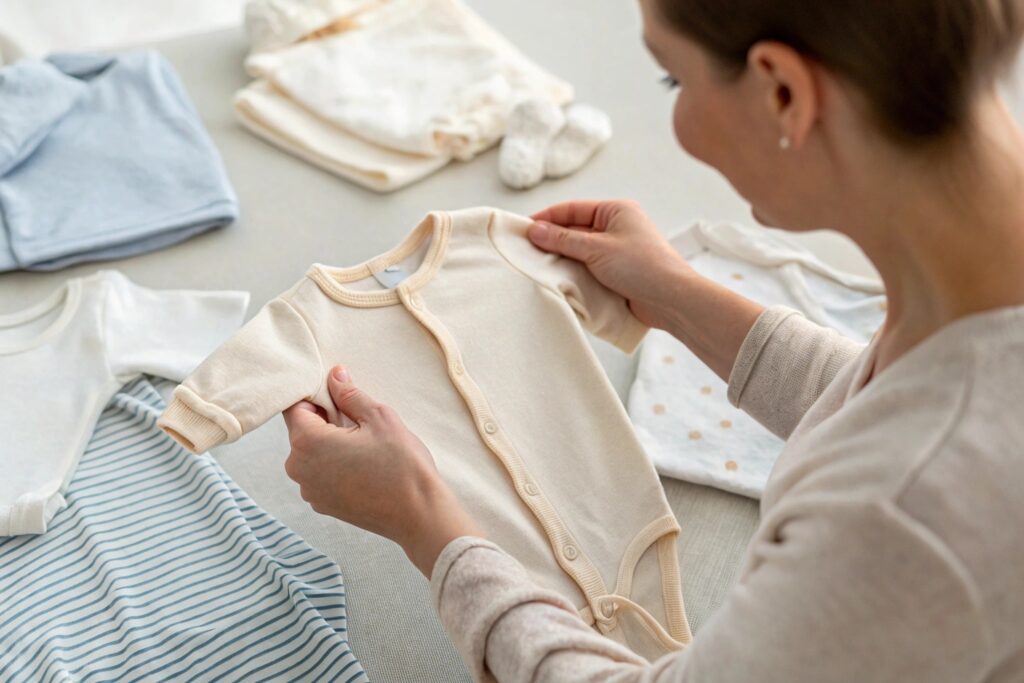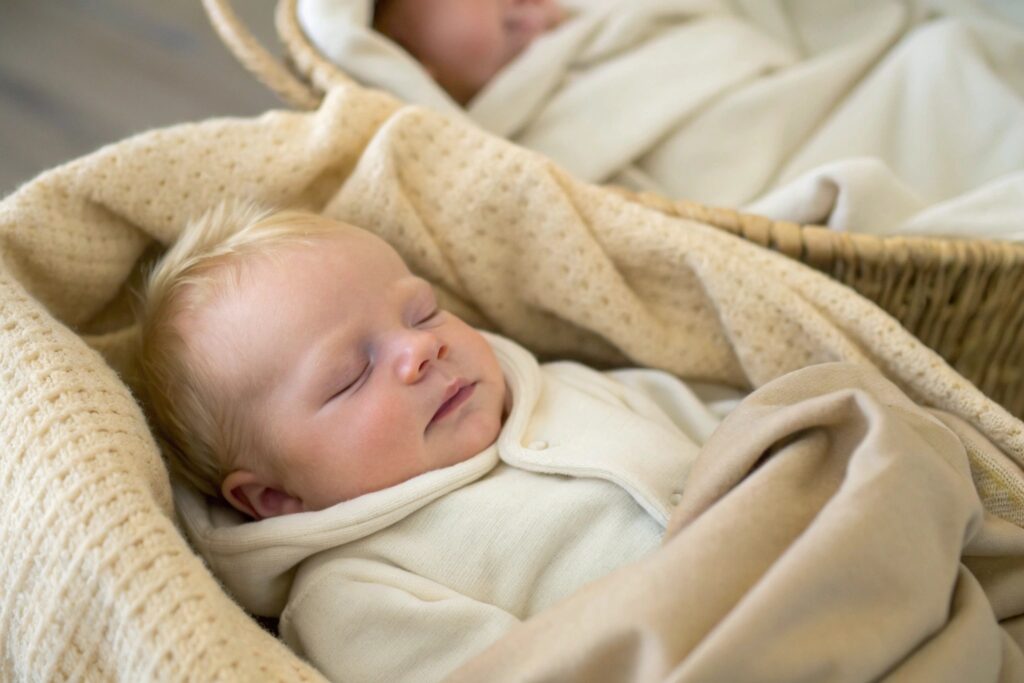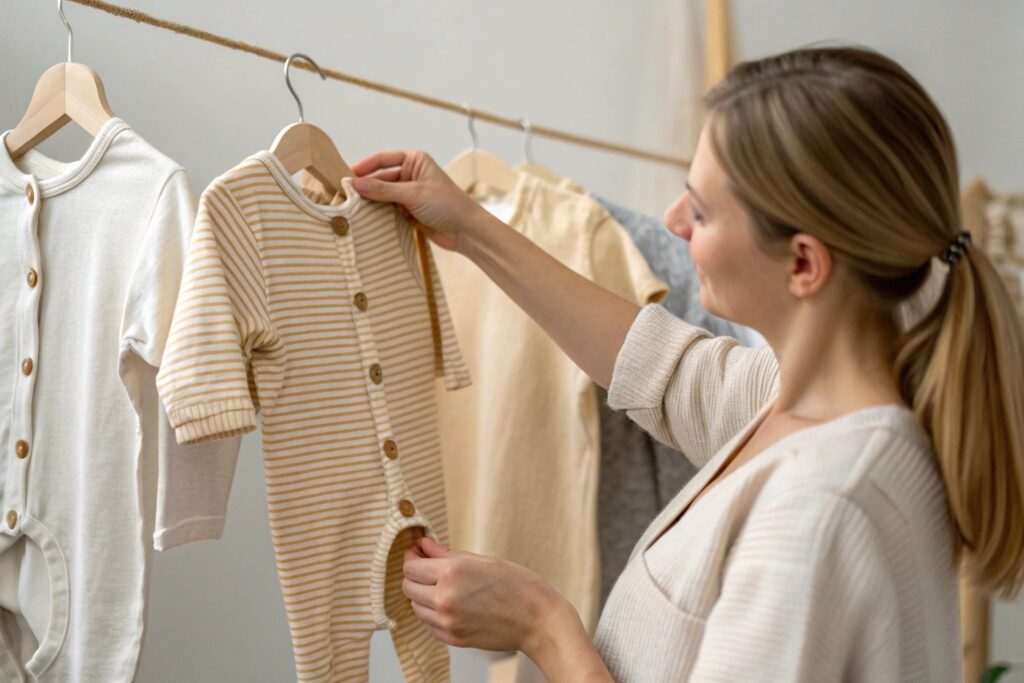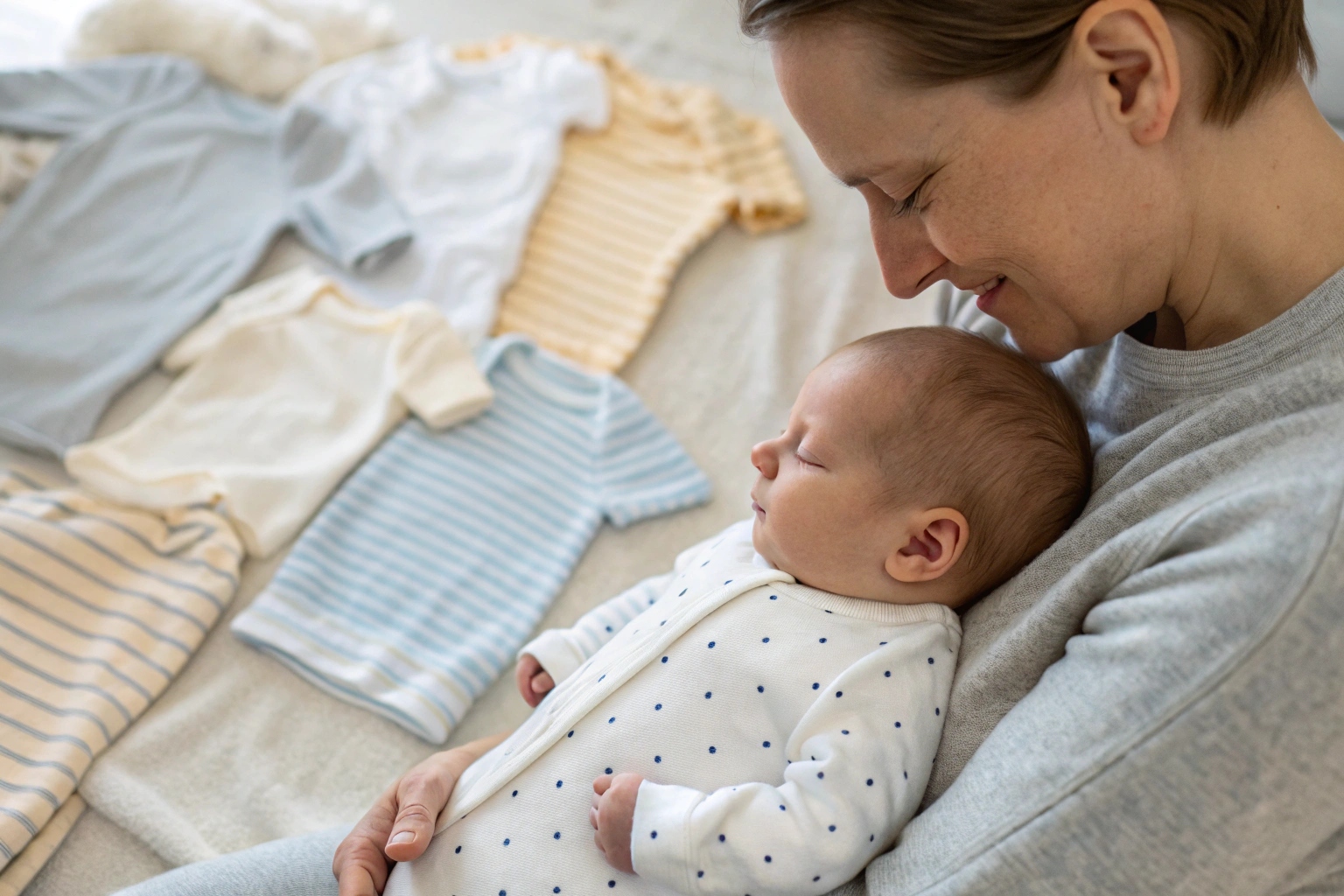Choosing fabric for baby clothing isn’t just a design decision—it’s a safety choice. From softness to breathability and chemical safety, the right material makes all the difference in how a baby sleeps, moves, and feels throughout the day.
The best babywear fabrics are soft, breathable, non-toxic, and gentle on sensitive skin. Organic cotton, bamboo viscose, and modal are top choices for comfort and health.
Let’s break down the best (and worst) materials for babies—so you can make confident, skin-friendly choices.
Why Organic Cotton Is a Top Choice for Babywear?
Among all fabric options, organic cotton consistently ranks as the safest and most trusted choice for baby clothing. It’s soft, breathable, and grown without harmful pesticides—making it ideal for everyday basics like bodysuits, sleepwear, and swaddles.
Unlike conventional cotton, organic cotton protects your baby from chemical exposure while being gentle enough for eczema-prone or highly sensitive skin.

Key benefits of organic cotton:
- Hypoallergenic and breathable—prevents heat rash and skin irritation
- Free from harsh chemicals—no pesticide residue or heavy dyes
- Softens with each wash—making it even gentler over time
- GOTS-certified options available—proving safe and ethical sourcing
- Durable and machine-washable—holds up well to daily wear
| Organic Cotton Use Case | Ideal Garment Types |
|---|---|
| Everyday wear | Onesies, leggings, bodysuits |
| Sensitive skin | Pajamas, bibs, crib sheets |
| Eco-conscious gifting | Layette sets, newborn gift packs |
Parents trust organic cotton because it’s natural, breathable, and proven safe for baby skin.
How Bamboo and Modal Compare for Softness and Breathability?
If organic cotton is the gold standard, bamboo viscose and modal fabrics are the silky-soft alternatives gaining popularity for their luxurious feel and high-performance comfort.
These plant-based fibers are known for being ultra-soft, moisture-wicking, and gentle—even in hot or humid climates.

Comparison of bamboo and modal:
| Feature | Bamboo Viscose | Modal (Beechwood-based) |
|---|---|---|
| Softness | Ultra-silky and drapey | Smooth and lightweight |
| Breathability | Excellent for warm climates | Very breathable and cool |
| Antibacterial | Naturally resistant to odor | Less antibacterial but fast-drying |
| Eco profile | Renewable but needs processing | Sustainable if sourced from FSC forests |
| Use in babywear | Sleepwear, swaddles, onesies | Pajamas, base layers, dresses |
Both fabrics are often blended with organic cotton or spandex to enhance stretch and durability for active babies.
If you’re looking for premium softness + skin-friendly feel, bamboo and modal are ideal.
What Fabrics to Avoid for Sensitive Baby Skin?
Not all materials are baby-friendly. Some fabrics may feel soft at first—but contain synthetic chemicals, rough textures, or poor breathability that can irritate delicate skin.
Avoiding synthetic or chemically-treated fabrics is key to preventing rashes, overheating, or allergic reactions in babies.

Fabrics to be cautious of:
- Polyester and polyester blends
- Traps heat, poor breathability
- Can cause sweating and discomfort
- Nylon and acrylic
- Often used in winterwear but not skin-safe
- Fabric with chemical finishes
- “Wrinkle-resistant,” “flame-retardant,” or “easy-care” often means chemical coating
- Rough wool
- May cause itching or irritation unless specially processed
| Fabric Warning Label | What It Likely Contains |
|---|---|
| “Easy-care polyester” | Petroleum-based fibers, low breathability |
| “Flame-resistant sleepwear” | Formaldehyde-based chemical treatments |
| “Synthetic fleece” | Can trap heat, shed microplastics |
The general rule? If you wouldn’t want to sleep in it, don’t dress your baby in it.
Tips for Choosing Non-Toxic, Hypoallergenic Materials?
Shopping for babywear doesn’t have to be overwhelming—if you know what to look for.
Focus on third-party certifications, natural fibres, and brands that share their fabric sourcing and chemical testing practices.

Smart tips for safe fabric selection:
- Look for OEKO-TEX® Standard 100 or GOTS-certified labels
- Avoid vague claims like “natural” or “eco” without proof
- Touch-test the fabric—soft, breathable, and slightly textured is ideal
- Stick to light colors—less likely to contain heavy dye chemicals
- Watch for hidden synthetics in trims, snaps, or labels
| Safe Label Example | What It Means |
|---|---|
| “100% Organic Cotton – GOTS Certified” | Verified safe from field to finished garment |
| “OEKO-TEX® Certified Fabric” | Tested for over 100 harmful substances |
| “Free from formaldehyde and AZO dyes” | No irritant residues in dye or finish |
Choose garments that are simple, breathable, and easy to trust—your baby’s skin will thank you.
Conclusion
The best material for baby clothing is one that’s soft, safe, and free from irritants. Organic cotton, bamboo viscose, and modal all offer exceptional comfort while protecting delicate skin. With certified fabrics and smart label reading, you can wrap your little one in clothes that are as healthy as they are cozy.










